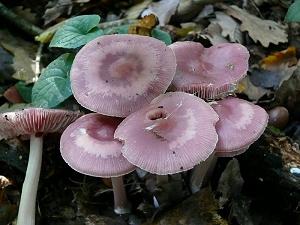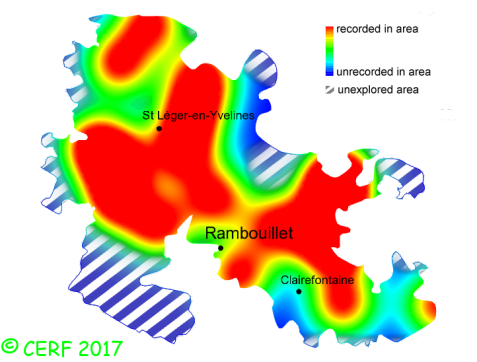| Mycena rosea (Bull.) Gramberg |
|
|
|
|
|
|
The cap is pink, paler at the centre, convex to flat, with a broad umbo; its margin is striate. The cap surface is smooth. The stem is white to slightly pink, slightly swollen towards base, without ring. The flesh is white to pinkish, unchanging; its taste is faint to mild, of radish; the odour is radish-like; its texture is fibrous. The gills are white to pale pink, adnate to emarginate, crowded . The spore print is white. This species is saprophytic. It grows on the ground, in deciduous woods, and sometimes with conifers, on a rather calcareous soil, most of the time with beech. The fruiting period takes place from July to November.
Chemical tests : none. Distinctive features : Pink cap, with striate margin and a slight umbo (not depressed) at its centre; pale pink gills; white stem, sometimes washed with pink, slightly club-shaped; smell of radish Mycena rosea is frequent and widely present in the forest of Rambouillet, and is infrequent, more generally speaking . | ||
|
page updated on 14/01/18

